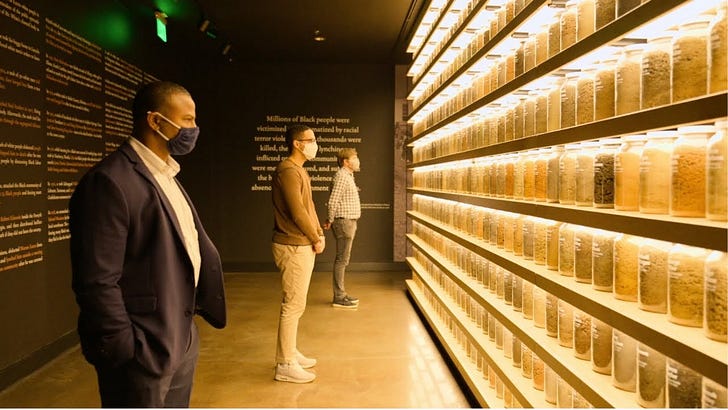A Phenomenology of Reflecting on Resilience and Legacy - Montgomery, Alabama
I am a child of those who would not die....
Last week, I had the opportunity to attend a private academic society meeting in Montgomery, Alabama. Reflecting on my travels, I realized this was only my second time in Alabama—a state that, along with Mississippi, often gives me pause due to its deeply ingrained history of racism and the enduring echoes of that legacy in its atmosphere. Despite having traveled extensively across the globe—from England and Paris to New Delhi and Mexico City—and throughout the United States, including Hawaii, certain places carry a weight that demands reflection.
Montgomery’s history is marked by figures like Governor George Wallace, whose infamous declaration, “Segregation now, segregation tomorrow, segregation forever,” remains a chilling reminder of the systemic racism that shaped the region. As part of our gathering, we visited the Legacy Museum, a site established by Bryan Stevenson and the Equal Justice Initiative to confront America’s history of racial injustice. Upon entering the museum, visitors are greeted by towering ceilings and the sound of relentless ocean waves—a haunting auditory and visual experience that evokes the Middle Passage. While I cannot recall every detail displayed on the screens, the emotional impact was profound, stirring deep reflections about my ancestry and identity.
A Phenomenology of Pain
Phenomenology is a way of thinking that focuses on understanding how we experience the world from our own perspective. Instead of trying to explain why things happen or relying on preexisting ideas, it looks at how things appear to us in the moment. A key idea in phenomenology is “intentionality,” which means that our thoughts and awareness are always directed toward something—whether it’s an object, a feeling, or an idea. This is central to making sense of meaning and value in life.
Standing in this darkened room illuminated solely by an HD screen of larger-than-life ocean waves, I couldn’t help but reflect on my connection to this history—my lighter skin tones serving as a stark reminder of the violent legacy of slavery and sexual exploitation. I asked: “Have I cried enough for my ancestors? I cannot imagine what was going through their minds while the ships solely fit for inanimate cargo now carry my ancestors as ‘human cargo.'“ This experience transcended a mere recounting of the Atlantic Slave Trade; it was a visceral embodiment of pain—a lived history that persists and continues to be threatened by descendants of these land, soul, and life-grabbing white men seeking to erase or diminish the blueprint of their demonarchy.
Each exhibit reminded me of the unimaginable suffering endured by enslaved mothers and fathers whose legacies I carry. The museum’s immersive experience brought waves of grief, and yet, I left with an unyielding sense of resilience. How?
My colleague shared her experience visiting Ghana’s “Gate of No Return,” where her group wept until their guide told them:
“Why are you African-Americans crying? You are the children of those who would not die.”
This sentiment stayed with me throughout my visit to the museum. Despite the tears and overwhelming sorrow, I felt renewed gratitude for their survival and victory. Their resilience is why I am here today.
As I move forward, I do so with intentionality—living in truth and embracing strength. No matter the challenges, I hold onto this powerful reminder: “Still, I rise.”




